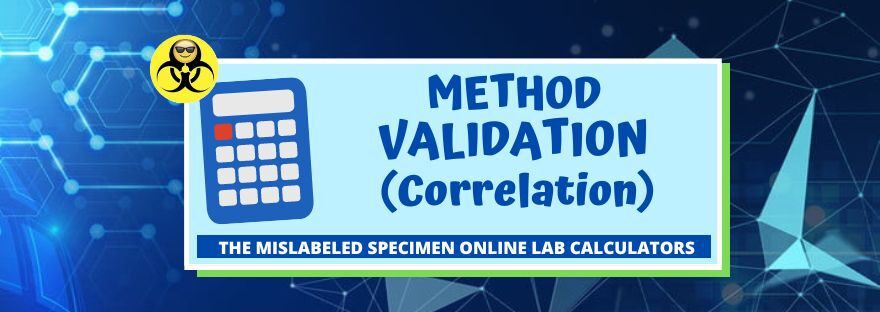Determine the validity or correlation of recovered values of an analyte with a new method in comparison to the reference method.
CLIA Recommendation: Must be done to determine the correlation factor between two methodologies.
Method A (New Method):
Analyzer:
Method B (Comparison Method):
Analyzer:
Enter up to 30 values below:
Number of Samples:
Range of Observation
Correlation Coefficient(r):
New Method Mean:
Comparison Method Mean:
Average Difference:
Slope:
Y-intercept:
Interpretation:
Definition of Terms:
Method validation is the process used to confirm that the analytical procedure employed for a specific test is suitable for its intended use. Results from method validation can be used to judge the quality, reliability and consistency of analytical results; it is an integral part of any good analytical practice.
Formula:
n = Number of points or dilutions
x-axis = Comparison or reference method
y-axis = New method
sumxy = sum of the products of the target & recovered values of a certain dilution
sumx = sum of all target values
sumy = sum of all recovered values
sumx2 = sum of all the squares of target values
sumy2 = sum of all the squares of recovered values
slope = ((n * sumxy) – (sumx * sumy))/((n * sumx2) – (sumx 2))
intercept = sumy – (slope * sumx)/n
correlation coefficient = ((n * sumxy) – (sumx * sumy)) / (((n * sumx2) – sumx2 * ((n * sumy2) – sumy2)0.5
Passing Criteria:
- Slope should be greater than 0.5
- Slope should be less than 1.5
- Correlation Coefficient should be equal or greater than 0.7
Please check out our list of calculators for Laboratory Statistics:





[…] Method Validation and Correlation […]
[…] Method Validation and Correlation […]
[…] Method Validation and Correlation […]